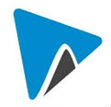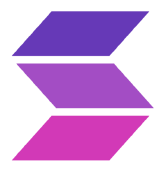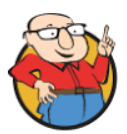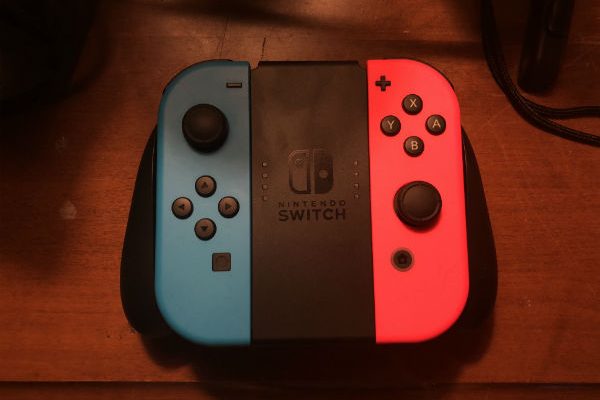Nintendo has had a rough few years, from 2012 to 2015. The last big console the company released was the Wii U which received abysmal sales and tarnished the game company’s image for a while (techradar.com). According to Tech Radar Author Dom Reseigh-Lincoln, Nintendo did take a few steps back after the release of the Wii U, but it never hindered that Nintendo magic.
“The Nintendo brand – that warm, inclusive, evocatively Japanese feeling – has never been watered down, even with the boom of Wii or the failings of Wii U. Nintendo machines always have an almost intangible magic about them, and it’s one that’s seen the company build the gaming industry into what it is today,” Reseigh-Lincoln wrote.
Nintendo was pretty dormant between the years of 2013 and 2016, only releasing steady games on their handheld consoles, the 3DS and the 2DS. It was rumored (venturebeat.com) that at the Electronic Entertainment Expo (E3) in 2016, the company would be announcing a new home console/handheld hybrid to make up for the epic failure that was the Wii U and the Gamepad.
The Wii U was slashed for its handheld controller, the Gamepad. It was big and clunky with a battery life of a few hours at most. Whenever it was utilized in the games released for the console, it felt very complicated and overall added nothing to the experience of playing. Some games made players switch between the Gamepad and the Wii remote, which became a hassle when just playing to pass some time. Nintendo acknowledged this and to this day, the company pretends the Wii U never happened.
Engineers at Nintendo took all the problems from the Wii U and worked to build upon the ideas. The number one seller of the Wii U was the marketing that players could take the Gamepad on the go and play outside of the house. It was a cool idea in concept, but the “U” really wasn’t made for transportation. Some games required the TV screen which makes the gamepad as a whole a waste. The areas to work upon included fixing the “take the games on the go” marketing and to improve upon the actual quality of the handheld screen.
In April of 2016, Nintendo had officially announced they were planning to release their first home console for the first time in a while, under the code name “Nintendo NX”. The first trailer dropped on Nintendo’s YouTube channel in October of the same year, mostly only revealing the final name of the console to be the Nintendo Switch and a bit of the console being able to be taken out of the house, one of the promises of the U that fell through. Skepticism arose from this, as many thought it was Nintendo shooting for redemption from the U. It was a fair argument, seeing how the U operated and what it fell short on, but later in the next few months, Nintendo hosted a livestream that wiped out everyone’s concerns.
Video viewable here: https://youtu.be/CdWd8fUC71g
The updated commercial (viewable at youtube.com) featured the players being able to place two small controllers (called the Joy-Cons) on the screen inside the console and pull it up to show the game immediately transfer from the TV to a high definition handheld. The Joy-Cons showed some versatility in their gameplay, some options included holding one in each hand, a classic controller “skeleton” to slide the controllers in for a more true controller feeling, and holding them on their sides for multiplayer.
Gamewise, the commercial featured two games that captured everyone’s attention: an open world Mario and Zelda game. Mario had not received a proper 3D open world game in over eight years, the last true one being Super Mario Galaxy 2 in 2010 (theverge.com). Nintendo had some filler with 2D-style games on handheld and the U (Super Mario 3D Land on the 3DS and Super Mario 3D World on the Wii U). The Zelda game shown was a port of the Wii U’s Breath of the Wild playable on the Switch, as Breath of the Wild was released late in the Wii U’s life and barely sold any units. They added a lot of hype leading up to the release of the system, Mario and Zelda fans alike. Not much of either game was actually shown; just a brief demo showed that the Switch was planning on living up to the hype (commercial viewable on youtube.com).
Video viewable here: https://youtu.be/1ikjYHzFezg
The console was set for a worldwide release on March 3rd, 2017 at a low entry price of $299.99 (the same price as most of Nintendo’s home consoles). Nintendo claimed back in November of 2018 that the Switch was the fastest selling console of the ninth generation.
“From its launch in March 2017 through November 2018, Nintendo Switch has sold more than 8.7 million units,” Nintendo shared in their article “Nintendo Switch is the Fastest-Selling Video Game System of this Generation.” The company reveals that this console outpaced North American sales of all other same-gen systems at the same point in their releases.
Nintendo has also shown record breaking sales from the year of 2018. NPD Group is an American market company that tracks consumer trends. The Nintendo Switch overtook the PlayStation 4 as the best selling console of 2018 in North America, according to them. Ever since Sony released the PS1 all the way back in December of 1994, the multimedia company has topped gaming charts around the world, dethroning Nintendo as the lead console provider for several years. Since the release, Nintendo went down the route of making more family friendly consoles that novice and experts alike can enjoy. The PlayStation was on top for years for gaming targeted at more advanced players. Since the Nintendo Switch released, the console still had that family friendly marketing; however, it is also home to some games an everyday gamer would never expect to be playable on a Nintendo console, including the likes of Final Fantasy VII and Mortal Kombat 11. After the rush from the holiday season, for the first time in decades, a Nintendo console went above Sony sales.
Chart courtesy of statista.com
After the horrific sales of the Wii U only selling around eleven million copies worldwide in its entire life, critics and gamers alike thought Nintendo would be heading out of the three major gaming companies, the other two being Sony with the PlayStation and Microsoft with the Xbox. The Switch was expected to sell similarly to the Wii U but sales numbers have hit the thirty-million mark worldwide as of December 2018 (statista.com). Considering the system was released back in 2017, the sales numbers show that the Switch will prove Nintendo isn’t playing around anymore. Will this console surpass one of the greatest selling consoles of all time, the Wii? No, most likely not. However, data not shown in the chart shows that the Switch has passed the Nintendo 64 in sales (comicbook.com). The Switch has only been around for two years and the Nintendo 64 was released back in 1996 and only sold thirty two million units in its life. Comparing the two, it’s obvious the Switch will be climbing up the best selling Nintendo Console list as sales haven’t seen any signs of stopping.
Woodland students participated in a poll to determine the most popular gaming company in the building. The first poll was asking students to choose Sony or Nintendo:
Nintendo won the majority vote, receiving a total of forty-six compared to Sony’s twelve. Students were then asked to choose between Microsoft and Nintendo:
Nintendo was chosen as the popular choice among students, receiving a grand total of seventy-nine votes. Despite the fact Sony is the best-selling console distributor, in the Beacon Falls and Prospect community it was determined Nintendo is the favorite.
The PlayStation 4 was released back in 2013 and as of today, sales numbers peak at around ninety-one million worldwide. Six years on the market has deemed this generation PlayStation as the world’s most popular gaming console (businessinsider.com). Assuming that the Nintendo Switch stays hot on the market for another four years to equal the amount of time the PS4 has been available and it sells about the same numbers each year as it is right now (around fifteen million per year), it can be estimated that the Switch might surpass ninety million units. The PS4 is growing older and might be taken off retail shelves soon as the average gaming console stays on the market for six to eight years (itworld.com). Sony has been dominating the top selling consoles list for a long time. However, it is very likely Nintendo can receive the title of top console manufacturer again. Nintendo’s first consoles, the Nintendo Entertainment System (NES) and the Super Nintendo Entertainment System (SNES), have sales ranging from forty million to sixty million (statista.com) despite the fact that the consoles were released during the Video Game Crash of 1983.
The Nintendo Wii is one of the most popular consoles ever, with sales peaking at 101.63 million units sold. None of Nintendo’s consoles since have sold nearly as good as the Wii did, and the Wii still holds the title of one of the world’s most bought console, making Nintendo a groundbreaking $606 million, and consoles are still being sold to this day (themysteriousworld.com). Wiis sold today are not new and are used or refurbished. However, that doesn’t change the fact that Nintendo makes six dollars from every Wii purchase (three percent of sales from each console goes back to Nintendo after paying the rest of sales to those involved in manufacturing and marketing).
Two years after the release of the Switch, it is easy to see that Nintendo is ready to get serious again. The Wii U was sloppily slapped together to try and interest those who liked the Wii. The Switch is its own thing on its own, and the console works on making its own image. The Switch will continue to receive high sales as big name games launch on the console and critically acclaimed games will continue to be sold by the hundreds of millions.
[polldaddy poll=10332657]




















